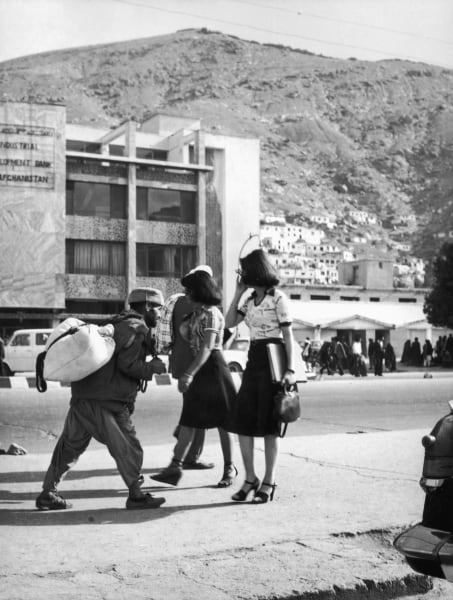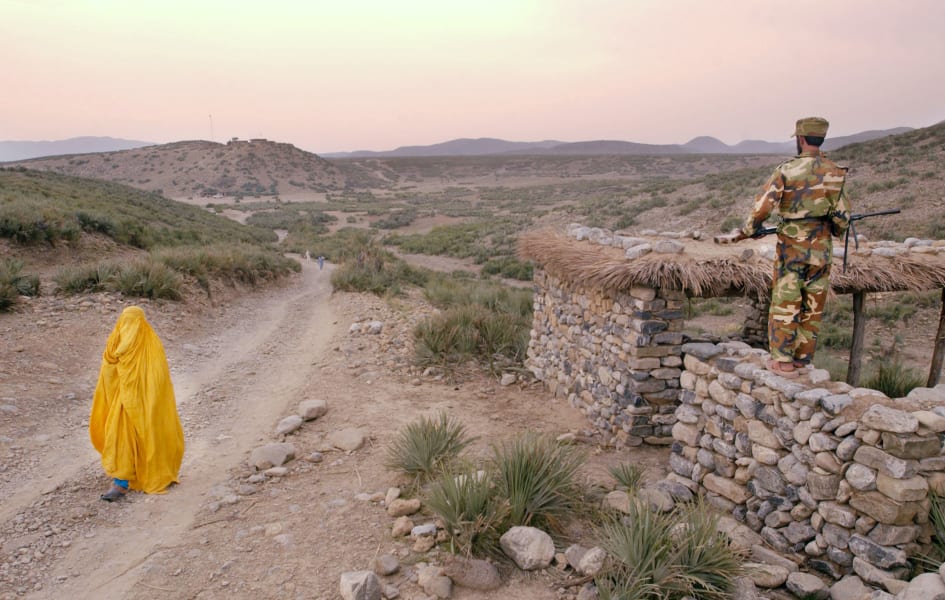Asia
Unveiled: Afghan women past and present
By Monica Sarkar, CNN
Updated 1750 GMT (0150 HKT) February 9, 2023
Share


1 of 11
Knee-length skirts, high heels and walking freely down the street: it's hard to believe that this was Kabul in June 1978. Browse through this gallery and see how dramatically women's dress in Afghanistan has changed over the years. V. Seykov/Keystone/Getty Images
Covered from head to toe, women walk on the outskirts of Jalalabad, accompanied by a liberally-dressed boy, in October 2013. Horia Mosadiq, Amnesty International's Afghanistan Researcher, says that although there are not any legal restrictions on women's dress code in Afghanistan, considerable social and cultural pressures force them to wear a burqa or fully cover themselves. "They would simply be targeted otherwise," she says, "by the Taliban, their family members, or even passers-by on the street." Noorullah Shirzada/AFP/Getty Images
Male and female Afghan students studying computing technology sit together and listen to a female Soviet teacher (center) in the Computing Center of the Polytechnical Institute in Kabul in 1981. The Soviet Union had invaded the country in December 1979. Stringer/AFP/Getty Images
Afghan female university students, dressed in the traditional blue burqa, attend a math class under a tent at the Nangarhar University campus in Jalalabad in September 2012. Under Taliban rule, between 1994 and 2001 women were banned from education and work, even from leaving their homes unaccompanied. Noorullah Shirzada/AFP/GettyImages
This picture taken in 1981 shows a well-groomed woman and her children on the streets of Kabul. "We used to be a fairly modern country," says Mosadiq. AFP/Getty Images
A young boy stands among a group of veiled women waiting to receive food aid during a U.N. World Food Program distribution in Kabul in November 2001. "I myself remember the mujahideen's takeover of Kabul on 27 April 1992," says Mosadiq. "On 26 April I wore a miniskirt and a sleeveless shirt, but the day after I was terrified to walk outside without being fully covered." EMMANUEL DUNAND/AFP/Getty Images
An Afghan woman, dressed in western-style clothing and standing comfortably around men, takes a photograph at the frontier between Pakistan and Afghanistan. This photograph was taken circa 1955. Richard Harrington/Three Lions/Getty Images
A burqa-clad woman crosses the border between Pakistan and Afghanistan in September 2002 at the Kadam Safar border crossing. Chris Hondros/Getty Images
Taken in 1962, this picture shows Afghan women walking along a street in Kabul. Four of them are wearing burqas, whereas one walks comfortably among them in European-style dress. "When the mujahideen-led government replaced the Soviets in 1992, new restrictions on dress were formalized," says Mosadiq, "and obviously the Taliban's takeover in 1994 was the final nail in the coffin for any kind of independent dress for both men and women." STAFF/AFP/Getty Images
Women wait to receive food aid during a U.N. World Food Program scheme in Kabul in December 2001. "Even inside Afghanistan, female dress code varies hugely between regions," says Mosadiq. "You'll find the blue burqas across the whole country, but in urban centers like Kabul many women will only wear a hijab. In the north a white burqa is common, and in some Pashtun areas you'll find women in colorful dresses and just a headscarf." AFP PHOTO/WEDA
An Afghan Kuchi (Pashtun nomad) girl covers her face as she attends a class on October 27, 2010. She is being taught in a tent near the ruins of the Darul Aman Palace on the outskirts of Kabul. SHAH MARAI/AFP/Getty Images


















